For the second time in an hour, my usually-reliable sense of direction let me down. The alleyways around Sishu Old Street (喜樹老街) were proving every bit as confounding as those in Sikunshen (四鯤鯓), where I’d started the day’s wanderings.
I was in the southwestern corner of Tainan, a few hundred meters from the Taiwan Strait, looking around neighborhoods that feel remote, but which have been part of the city since the boundary between Tainan City and Tainan County was drawn in 1946.
Inspiration to explore this part of Tainan had come in the form of a religious building, specifically its name. Longshan Temple (龍山寺) in Lukang (鹿港) is the country’s most sublime place of worship. Mengjia Longshan Temple (艋舺龍山寺) may well be Taipei’s busiest shrine, while Longshan Temple in Kaohsiung’s Fengshan (鳳山) District has 301 years of history. So when I noticed that Sikunshen has its own Longshan Temple, my mind was made up.
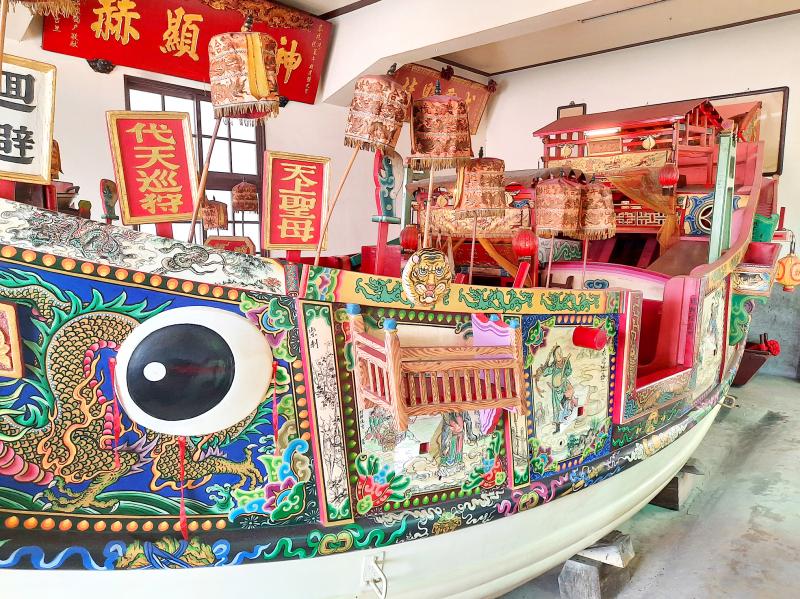
Photo: Steven Crook
TEMPLE ART
I knew I shouldn’t expect too much, simply because the shrine shares a name with some of Taiwan’s most glorious religious edifices. Yet Sikunshen Longshan Temple, it turned out, has both historic and of artistic significance.
The bilingual leaflet I picked up on arrival told me that it was established in 1665 by early Han settlers who worshipped Master Qingshui (清水祖師). If this is correct, it’s the oldest shrine in Taiwan devoted to Qingshui, a Buddhist monk in 11th-century Fujian revered for his skill as a physician and a rainmaker.
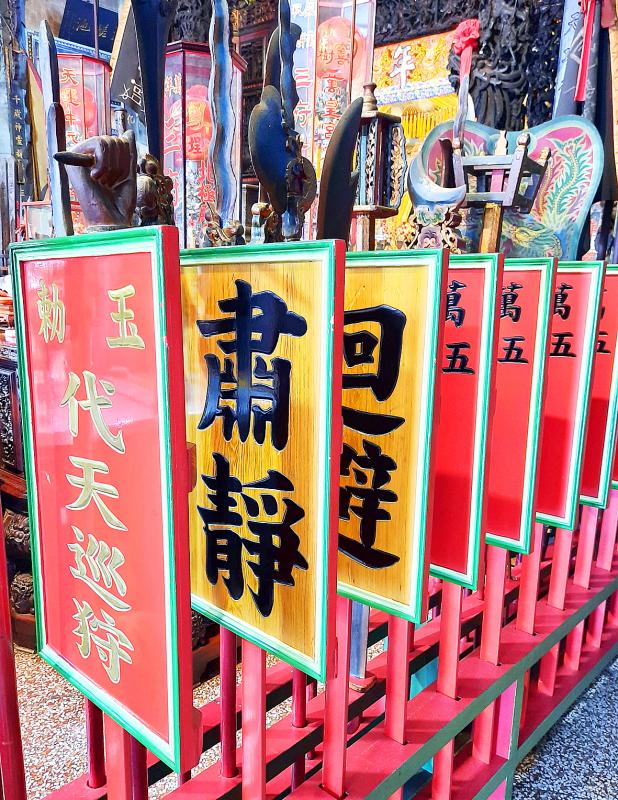
Photo: Steven Crook
The temple’s current door gods were painted by Pan Yuei-hsiung (潘岳雄). A previous set of door gods — painted by Pan’s late father, the renowned artist Pan Li-shui (潘麗水) — are preserved in an upstairs gallery. Unfortunately, the room is so badly lit that I couldn’t properly appreciate the elder Pan’s work.
Following a bilingual sign, I then visited the 300-year-old Longmu Well North (目井分頂頭) on Alley 47, Lane 194, Kunshen Road (鯤鯓路). Until 1968, when the neighborhood was connected to the municipal water supply, Sikunshen residents depended on this well and its sister, Longmu Well South (龍目井下頭).
The distance from one well to the other is less than 150m, but I had no luck finding Longmu Well South. The sidestreets seemed to form concentric semicircles. Only when I emerged onto the straight road that approaches Anping Port (安平商港) did I get my bearings.
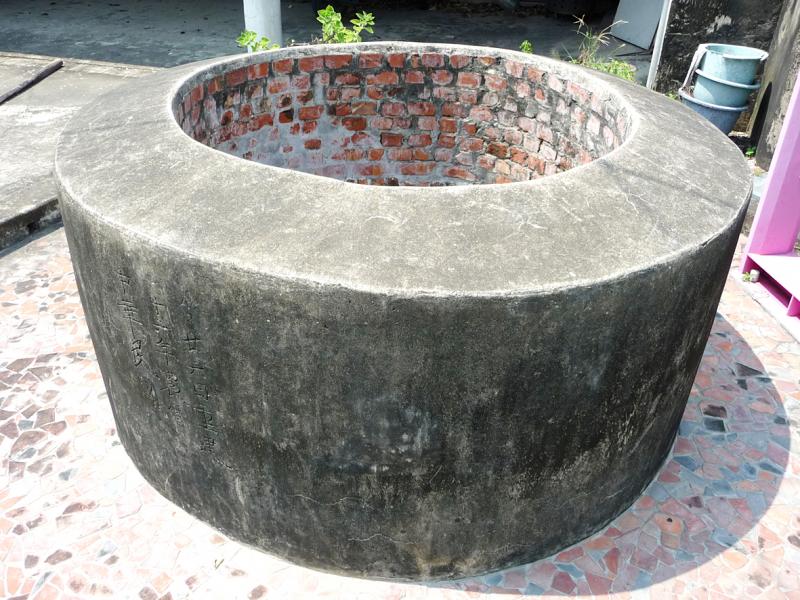
Photo: Steven Crook
Riding south away from the port, within five minutes I reached Sishu (喜樹), situated between Provincial Highways 17 and 17A (17甲). The “official” Old Street is Lane 254, Sishu Road (喜樹路), but venturing down Lane 302 or Lane 340 is even better if picturesque scenes of dilapidation braise your pork chop.
I moved around slowly, because it wasn’t always obvious what was an alleyway for public use, and what was simply a gap between houses. As I got lost, I couldn’t help but think: If these tiny redbrick dwellings were in Lukang (鹿港) or Anping (安平), market forces and/or government funding would have resulted in at least a few renovation efforts.
Some of the ruins have been labeled. The roof beams of the Old Zheng Family House (鄭家古厝) have rotted to the thickness of walking sticks. Judging by what remains of the facade, at some point in the 20th century its owners were among the area’s wealthier residents. The compound which includes the Xin Family’s Old Well (辛家古井) is in better condition, but it appears to be uninhabited.

Photo: Steven Crook
I’ve mixed feelings about the murals that have been painted on several of Sishu’s walls. Colorful nostalgia makes for good photos, yet in none of Taiwan’s old streets or old neighborhoods have I seen a house realistically restored to show how people actually lived in the past. How did they cope with stifling heat in summer, winter’s cold draughts, bugs and vermin, not to mention the absence of running water and electricity?
BLESSING THE BEAMER
Wanli Wannian Temple (灣裡萬年殿), 1km south of Sishu Old Street, has become popular in recent decades as a place where owners of new cars get their vehicles blessed.
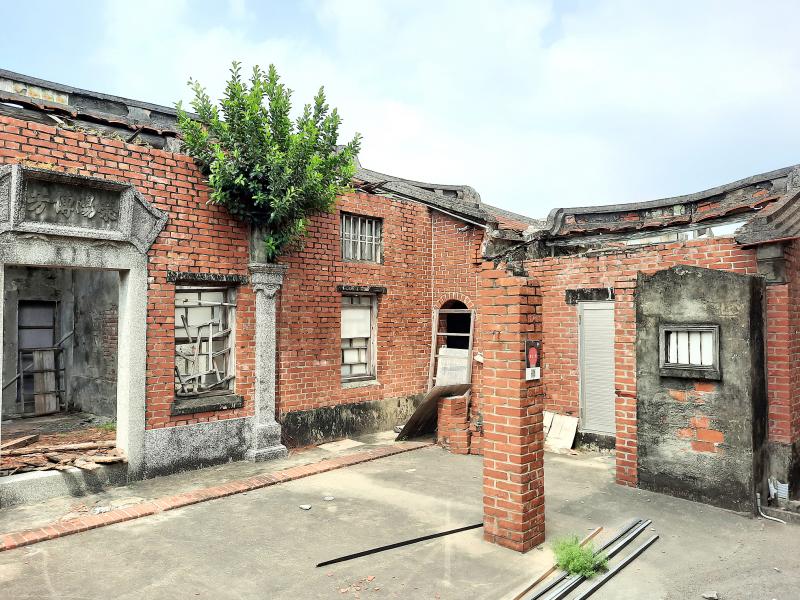
Photo: Steven Crook
Just as I arrived, a BMW SUV pulled out from the forecourt, trailing a long string of firecrackers. It crept a short distance down the street while the pyrotechnics detonated. When the car stopped, the driver brushed firecracker debris from the back of his automobile before untying the string. He then climbed back in without looking at the trash and scorch marks he’d left on the road. But I’m sure he’d made a generous donation to the temple.
Wannian Temple, which is at 64 Wanli Road (灣裡路), was founded in 1729 to enshrine three Wang Ye (王爺) spirits: Zhu, Lord of a Thousand Years (朱府千歲); Li, Lord of a Thousand Years (李府千歲); and Ye, Lord of a Thousand Years (葉府千歲).
The original effigies of this trio arrived on an unmanned boat which was likely set adrift from the coast of China’s Fujian Province during a plague-expulsion ritual. Realizing what this boat signified, those who found it stranded on the beach near Wanli surely reacted with awe and fear, regarding it literally as “a gift from the gods.”
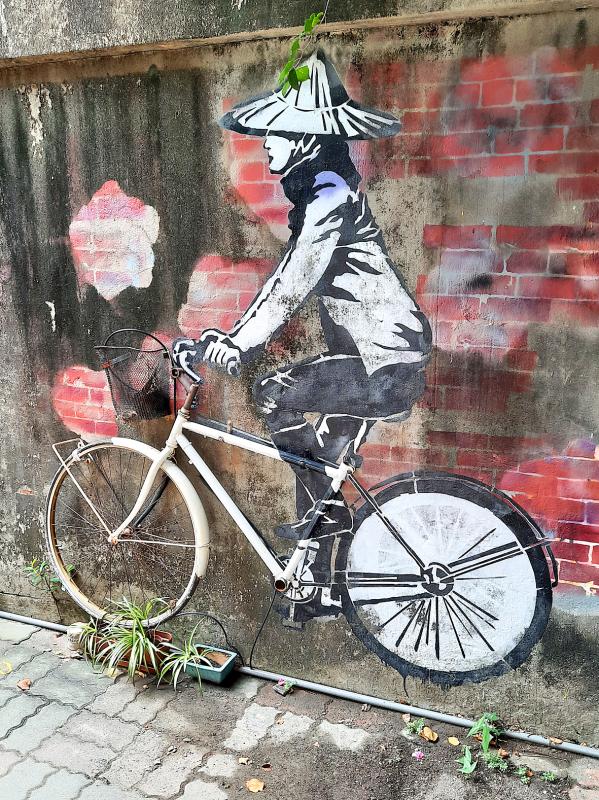
Photo: Steven Crook
The people of Sishu thought the boat and effigies should be theirs. The residents of Wanli argued they were entitled to take possession. Eventually, a compromise was reached. The icons ended up in Sishu’s Wanhuang Temple (萬皇宮) on Lane 222, Sishu Road. Wannian Temple was established to preserve and propitiate the boat.
There are now two boats. The vessel housed in the temple’s south wing replaced the original, while the one in the north wing was built to mark the temple’s affiliation with Nankunshen Daitian Temple (南鯤鯓代天府) in Tainan’s Beimen District. Both are about 7m in length.
So Wannian Temple’s resident deities could inspect their earthly domain, the latter vessel used to be sailed along the Erren River (二仁溪). If you saw my article “A river in recovery” (July 24 Taipei Times, page 13), you may guess why the temple’s management committee scrapped this practice, and why there’s a chance it could be revived in the future. Industrialization left the Erren River horrifically polluted, but it’s now significantly cleaner. The gods may yet resume their waterborne patrols.
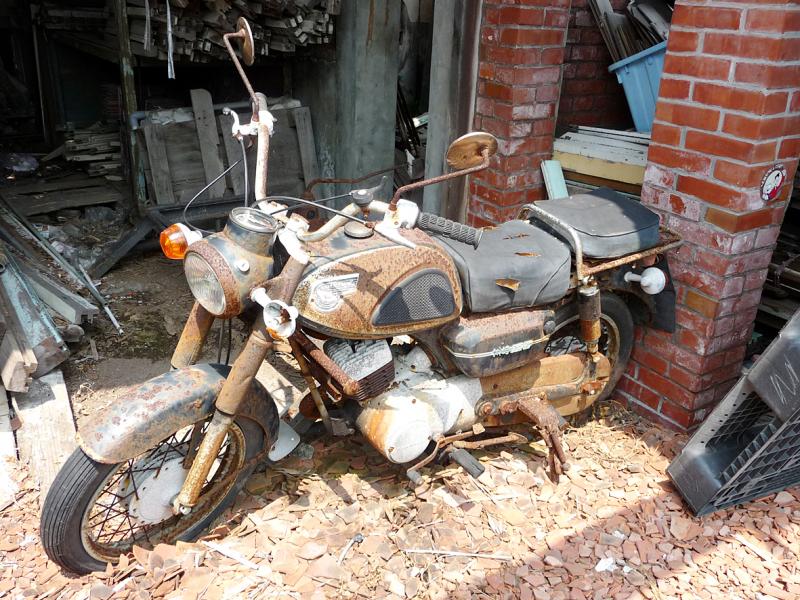
Photo: Steven Crook
Steven Crook has been writing about travel, culture and business in Taiwan since 1996. He is the author of Taiwan: The Bradt Travel Guide and co-author of A Culinary History of Taipei: Beyond Pork and Ponlai.

Anyone who has been to Alishan (阿里山) is familiar with the railroad there: one line comes up from Chiayi City past the sacred tree site, while another line goes up to the sunrise viewing platform at Zhushan (祝山). Of course, as a center of logging operations for over 60 years, Alishan did have more rail lines in the past. Are any of these still around? Are they easily accessible? Are they worth visiting? The answer to all three of these questions is emphatically: Yes! One of these lines ran from Alishan all the way up to the base of Jade Mountain. Its

The entire saga involving the Taiwan People’s Party (TPP) and its Chairman Ko Wen-je (柯文哲) continues to produce plot twists at such a rapid pace that fiction publishers would throw it out for being ridiculously improbable. This past week was particularly bizarre, but surprisingly the press has almost entirely ignored a big story that could have serious national security implications and instead focused on a series of salacious bombshell allegations. Ko is currently being held incommunicado by prosecutors while several criminal investigations are ongoing on allegations of bribery and stealing campaign funds. This last week for reasons unknown Ko completely shaved

The only geopolitical certainty is that massive change is coming. Three macro trends are only just starting to accelerate, forming a very disruptive background to an already unsettled future. One is that technological transformations exponentially more consequential and rapid than anything prior are in their infancy, and will play out like several simultaneous industrial revolutions. ROBOT REVOLUTION It is still early days, but impacts are starting to be felt. Just yesterday, this line appeared in an article: “To meet demands at Foxconn, factory planners are building physical AI-powered robotic factories with Omniverse and NVIDIA AI.” In other words, they used AI

The rhythms of bustling, working-class Mumbai are brought to vivid life in All We Imagine as Light. The stunning narrative debut of filmmaker Payal Kapadia explores the lives of three women in the city whose existence is mostly transit and work. Even that isn’t always enough to get by and pay the rent. One of the women, a widow, recently retired from working her whole life at a city hospital, Parvaty (Chhaya Kadam), is even facing eviction. The other two, roommates and co-workers in the maternity ward are in different parts of life. Prabha (Kani Kusruti) has a husband from an